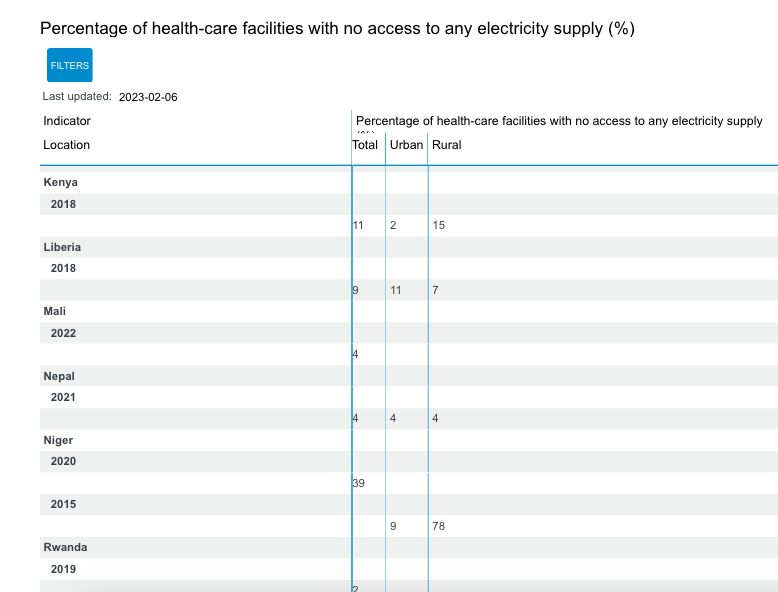Quantifying the energy access situation of health-care facilities in low- and lower-middle-income countries is critical to understanding the extent to which a lack of electricity is a barrier to the delivery of quality health-care services, a key component of universal health coverage, and the agenda under the Sustainable Development Goals.
It is estimated that close to 1 billion people in low- and lower-middle-income countries are served by health-care facilities without reliable electricity access or with no electricity access at all. In low- and lower-middle-income countries of South Asia and sub-Saharan Africa, approximately 12% and 15% of health-care facilities, respectively, have no access to electricity whatsoever. There is a sharp urban–rural divide: urban health-care facilities often report more access to electricity and more reliable electricity than rural facilities in the same country. WHO monitors the progress on electrifying health-care facilities in underserved countries.
The database includes summary statistics from national health-care facility assessments, surveys and reports on the percentage of facilities reporting no access to any electricity, unreliable access and reliable access to electricity. The data are disaggregated by health-care facility attributes, when available, including facility type (hospital versus non-hospital) and geographic location (urban versus rural).
